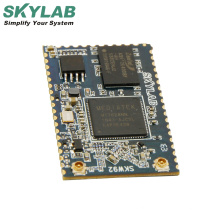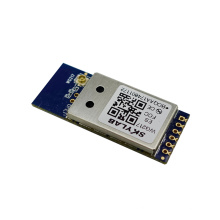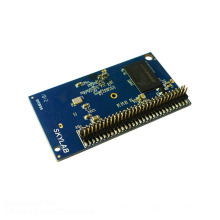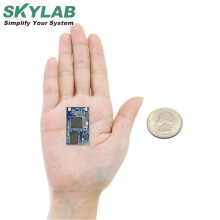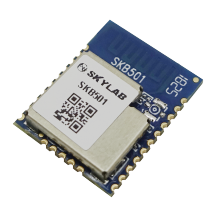Research on Modern Automotive Vehicle Diagnostic System (OBD)
2021-06-27
With the increasing number of car ownership in the world and the increasing awareness of human environmental protection, the pollution of automobile emissions has become more and more concerned by the world, and the emission regulations formulated by countries around the world are becoming more and more strict. The OBD (On-Board Diagnostic) system came into being as environmental agencies demanded more accurate methods to detect engine performance problems that caused emissions to rise. The latest second-generation in-vehicle diagnostic system is one of the effective means of monitoring vehicle emissions. The most important point of the second generation of on-board diagnostic systems is that the system is designed to detect whether the HC, CO, NOx and fuel evaporative pollution values of vehicle exhaust emissions exceed the emission limits. The OBD system will not replace regular emissions testing, but will function as a vehicle-mounted emission monitor. As a responder to the EU's vehicle emission regulations, China will implement EOBD (European On-Board Diagnostic) in the near future.
1 OBD system overview
This article refers to the address: http://
1.1 The development of the OBD system
The OBD system has gone through two phases: OBDI (first generation on-board diagnostic system) and OBDII (second generation on-board diagnostic system) and EOBD. OBDI was first used in California by the United States in 1991. Its function is relatively simple, mainly to diagnose the complete failure of parts related to emissions. There is no uniform standard for OBDI. OBD connector sockets, fault codes, communication protocols and other forms are mostly different, which brings a lot of inconvenience to the fault diagnosis and maintenance of electric control vehicles. The second phase of the OBDII and EOBD systems is very complicated. In addition to the complete failure diagnosis of emission-related components, OBDII and EOBD also diagnose the excessive discharge caused by aging and partial failure of components. Therefore, the OBDII and EOBD systems are the real realization of emission control for the entire service life of the vehicle in use. OBDII and EOBD use a unified standard, and it is possible to perform diagnostic tests on various vehicles with one instrument, which provides great convenience for global vehicle maintenance testing.
Because the United States and Europe use two different emission regulations, the second generation of on-board diagnostic systems are available in OBDII and EOBD. The United States implements OBDII, while countries that adopt European emission regulations implement the EOBD system. From the root cause, the US OBDII system is implemented earlier and the standards are more stringent. The US Environmental Protection Agency stipulates that the electronic control system for cars and light trucks (under 6.5t) produced after 1996 requires the OBDII system to be installed. On January 1, 2000, all car manufacturers and cars and light trucks will be produced. The OBDII system must be configured. Canada began implementing the OBDII system in 1998. In Europe, the EOBD system was gradually implemented from 2000. In 2001, all newly-produced cars in Europe (with a load of less than 2.5t) were limited to the EOBD system for gasoline engines. For diesel engine cars, the EOBD system must be mandatory by 2004. There are no OBD regulations in the China-Europe II standards that have been issued in China. However, with the implementation of the Euro III standards, the use of EOBD will be put on the agenda.
1.2 Composition of the OBD system
The OBD system is very complicated. The California Air Resources Board (CARB) OBDII system includes more than 70 pages of detailed regulations and hundreds of pages of detailed SAE and ISO standards. The OBD system is functionally implemented by software and hardware. OBD software ü 收 锒 锒 锒 牒捅甓ǎ敕 牒捅甓ǎ敕 刂撇糠 刂撇糠 刂撇糠 刂撇糠 刂撇糠 刂撇糠 刂撇糠 刂撇糠 刂撇糠 刂撇糠 刂撇糠 龇 龇 龇 龇 龇 龇 龇 龇 龇 龇 龇 龇The code of the BD part of the 6 低 低 砑 砑 占 占 占 占 占 占 占 占 占 占 占 占 一半 一半 一半 一半 一半 一半 一半 琌 琌Typical EOBD software includes 60,000 lines of code and 15,000 calibrations. OBD hardware consists of subsystems related to engine exhaust control, such as
1.3 How does the OBD system work?
When the car is in normal operation, the signal (voltage or current) input and output of the electronic control system of the car will change regularly within a certain range; when the signal of the electronic control system circuit is abnormal and exceeds the normal range of variation, And this abnormal phenomenon does not disappear within a certain time (3 consecutive strokes), the ECU judges that this part is faulty, the fault display light is on, and the monitor stores the fault in the form of code into the internal RAM ( Random Access Memory: The stored fault code can be read by the fault indicator or OBDII scanner during maintenance. If the fault no longer exists, the monitor will turn off the command fault indicator after receiving the relevant signal for 3 consecutive times. After the fault indicator light is turned off, the engine is warmed up for about 40 times, and the fault code is automatically cleared from the memory.
1.4 Main features of the OBD system
Compared with OBDI, the biggest improvement of OBDII is that OBDII has a unified standard, which provides many conveniences for fault diagnosis and inspection and maintenance of electronic control vehicles. In 1988, SAE (American Society of Engineers) created the first fault diagnosis connector socket and a set of fault codes as standard promotion. The US Environmental Protection Agency adopted most of the SAE standards and recommended it as a worldwide standard. All OBDII or EOBD equipped vehicles must include the following standardized hardware and software: standardized data diagnostic interface (SAE-J1962), standardized decoder (SAE-J1978), standardized electronic communication protocol (kW2000, CAN, CLASSII, ISO9141, etc., standardized diagnostic trouble codes (DTC, SAE-J2012), standardized maintenance service information (SAE-J2000). 2 OBD system detection object
OBDII requires the detection of any component or system related to emissions. Focus on detecting fuel and air measurement system failures, ignition system failures or engine intermittent flameouts, and exhaust control aid failures.
3 Limitations of the OBD system
(1) The OBD system cannot measure vehicle emissions such as CO, NOx, and HC, but only functions as a vehicle-mounted emission monitor. Therefore, if it is necessary to accurately analyze the vehicle exhaust emissions, other monitoring methods or other exhaust gas analyzers are needed.
(2) The reliability of the OBD system is affected by the operating environment of the vehicle. In certain working situations, such as poor operating conditions and abnormal working conditions, the OBD system may be in error. At this time, the OBD system is generally suspended. Moreover, the wrong fault indication will reduce the user's credibility to the OBD system, so that some users will ignore this after the OBD issued a fault warning, so that the functions of the OBD should not be realized.
(3) The OBD system cannot indicate how to repair the vehicle. It can only monitor the vehicle in real time, store the detected fault in the form of code in the memory, and notify the driver of the fault location by illuminating the fault light or Indicates that there is a confirmed fault and reminds the driver to repair the vehicle.
(4) The OBD system cannot diagnose all faults in the vehicle's electronic control system. It can only detect 70% to 80% of faults in the vehicle's electronic control system. It is not possible to effectively judge the deterioration of the vehicle system by relying solely on the way of the fault display light.
(5) The OBD system poses a huge challenge to software. The OBD software is about half of the entire electronically controlled car software. Any of these software errors can lead to incorrect fault indications or violations. In terms of software accuracy, even 99.9% accuracy still causes many system problems.
In addition, there are many difficulties with OBD system software and detection, such as being too sensitive, too insensitive, and inaccurate.
4 Conclusion
OBD is a very complex self-diagnostic system for detecting faults in components and systems that affect vehicle emissions. The purpose of implementing an OBD system is to determine if emissions exceed the maximum due to failure of components or subsystems. At present, the domestic automobile emission control system is basically directly adopting foreign mature products, and domestic research on the OBD field is still in its infancy. OBD will be mentioned as a very important position as vehicle emission regulations become more stringent. With the continuous improvement of China's emission regulations, the Chinese government will certainly establish strict OBD regulations to control the emission levels of vehicles in use. Although the OBD system still has some limitations, it is currently the true emission control for the entire service life of the vehicle. With the implementation of China's Euro III emission regulations, OBD has become a hot topic in the automotive industry.
We make OBD connector with terminal by ourselves, soldering type and crimping type are both available. Also 12V and 24V type. OBD1, OB2, J1939, J1708, J1962, etc. Also molded by different type, straight type or right-angle type. The OBD connector cables used for Audi, Honda, Toyota, BWM, etc. We have wide range of materials source , also we can support customers to make a customized one to replace the original ones.
Sae J1708 Connector, Sae J1939 Connector, OBD2 Diagnostic Connectors, Diagnostic Connector, Deutsch Diagnostic Connector
OBD2 Vehicle GPS Tracker,GPS Vehicle Tracker,GPS Motorcycle Tracker Co., Ltd. http://www.oemmoldedcables.com
Previous: Top Security OBD Car GPS Alarm Tk208-Ez


